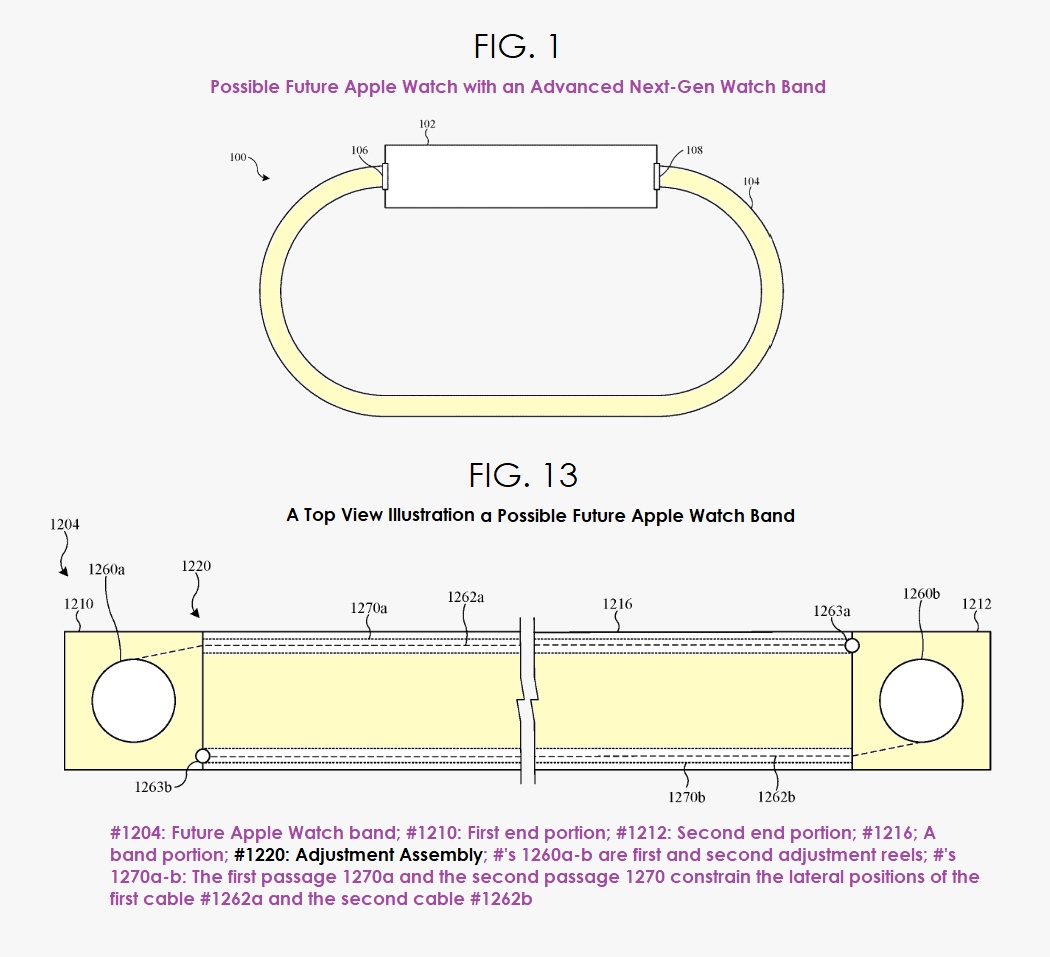Apple has taken a significant step toward improving the Apple Watch experience with a newly published patent revealing a next-generation watch band designed to deliver a precision fit. This innovation targets better comfort, improved sensor accuracy, and enhanced user experience, particularly for active users.
Dynamic Fit Adjustment Technology
The patent, titled *“Dynamic Fit Adjustment for Wearable Electronic Devices,”* describes a watch band capable of automatically adjusting its size in response to the wearer’s wrist movements and changing conditions. Unlike traditional bands that rely on fixed holes or manual tightening, this design incorporates internal components that adapt in real time.
This means the band can tighten or loosen itself subtly to maintain an optimal fit throughout the day, whether the wearer is exercising, resting, or performing daily activities. The system may use miniaturized motors, shape-memory materials, or mechanical adjustments to achieve this dynamic fitting.
Why a Precision Fit Matters
A snug and consistent fit is critical for the Apple Watch’s health monitoring features. Sensors such as heart rate monitors, ECG, and blood oxygen meters require good skin contact to collect accurate data. Loose or ill-fitting bands can cause erratic readings, frustrating users who rely on these metrics for fitness tracking or health monitoring.
Apple’s invention aims to solve this by preventing band slippage and ensuring the sensors maintain continuous, firm contact with the skin. This could significantly improve the reliability of biometric data, especially during vigorous workouts or outdoor activities.
Comfort and Wearability
Comfort is another key focus of the new band design. Apple recognizes that many users experience discomfort or skin irritation from watch bands that don’t adjust throughout the day. The patent suggests that the dynamic adjustment mechanism will also help reduce pressure points and allow for better airflow, making the watch more pleasant to wear for long periods.
Potential Materials and Mechanisms
While the patent doesn’t disclose specific materials, it hints at the use of advanced flexible materials, shape-memory alloys, or smart textiles that can respond to electrical or thermal stimuli. These materials could enable smooth and silent size changes without bulky motors.
Apple may also incorporate sensors within the band itself to monitor fit and trigger adjustments automatically, creating a seamless user experience.
Future Implications for Wearable Technology
This innovation aligns with Apple’s broader vision of creating smart wearables that are not only technologically advanced but also highly user-friendly. A watch band that adjusts itself dynamically could set a new industry standard for wearables, pushing competitors to explore similar adaptive designs.
It may also open doors for additional features, such as biometric data collection directly from the band or advanced haptic feedback systems.
What’s Next?
While this patent is still in the conceptual phase, Apple’s track record suggests it could become a reality in the near future. The next iterations of the Apple Watch, possibly the Series 10 or beyond, may debut this technology.
Consumers eager for better comfort and more accurate health tracking should keep an eye on upcoming Apple Watch announcements.





